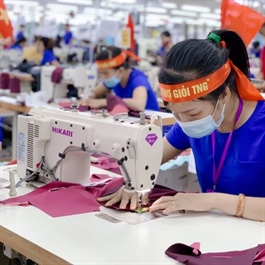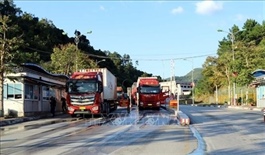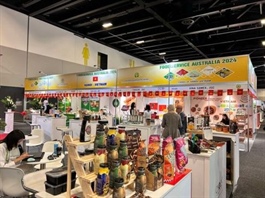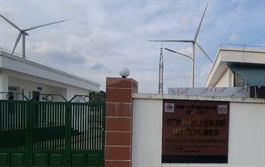Vietnamese enterprises urged to prepare for rising trade disputes
Vietnamese enterprises urged to prepare for rising trade disputes
Vietnamese enterprises should prepare for a rising level of trade disputes and be ready with a greater understanding of how to cope as the level of bilateral trade with China rapidly increases.

Goods transported between Việt Nam and China via Kim Thành International Road Border Gate No 2 in Lào Cai Province. Vietnamese enterprises should prepare for more trade disputes and learn more as the level of bilateral trade with China is rising. — VNA/VNS Photo Quốc Khánh |
According to Vũ Tiến Lộc, Chairman of Việt Nam International Arbitration Centre (VIAC), China continues to be Việt Nam’s largest trade partner and second largest export market, while Việt Nam is also China’s largest trade partner in ASEAN.
The Regional Comprehensive Economic Partnership (RCEP) is now opening a new era for the trade and investment relationship between the two countries.
However, along with the increase in the level of trade and investment cooperation, transactions are becoming more complicated, meaning that disputes might arise.
Vietnamese enterprises should prepare for disputes and be equipped with knowledge on how they can be resolved.
Nguyễn Duy Linh, a member of Việt Nam International Law Firm, said that trade disputes might arise from incompatibility of legal regulations, the lack of stability of policies and the inconsistency in enforcement.
Specifically, according to Linh, there are risks of disputes arising because the trade and investment relations between Việt Nam and China are regulated by numerous legal systems, including the law systems of the two countries and bilateral and multi-lateral trade agreements.
Currently there are at least ten trade and investment agreements in which Việt Nam and China are members.
Policy changes could cause problems, Linh said, adding that a number of new laws were issued recently but the issuance of instructions for the implementation remained slow. The lack of consistency in applying laws also meant disputes were protracted.
There were also risks related to information security and trade frauds, he said.
He urged enterprises to study regulations carefully before signing contracts or making an investment and that all contracts needed to clarify dispute resettlement mechanisms.
According to Lộc, as the two countries move towards sustainable bilateral trade and investment, the focus should be on enabling enterprises to proactively prevent disputes from arising through contract risk management.
One of the effective solutions to resolve cross-border trade disputes is via international arbitration.
Wang Chengjie, from China's International Economic and Trade Arbitration Commission, said arbitration was a popular dispute resolution method.
Both Chinese and Vietnamese businesses should take arbitration more seriously, he said, adding that expert and professional arbitrators could help resolve disputes in a fast and cost-effective manner.
The bilateral trade between Việt Nam and China amounted US$171.85 billion in 2023, with Việt Nam’s exports at $61.21 billion.
The two countries saw trade exchange worth $43.6 billion in the first quarter of this year. Việt Nam’s exports to China totalled $13.1 billion in the quarter, up 9.16 per cent while imports were up 28.85 per cent to $30.4 billion.
To the end of March, China has invested $27.64 billion in more than 4,400 projects across Việt Nam.



























